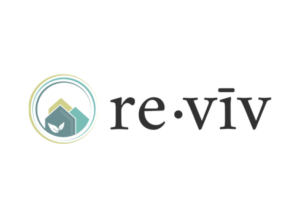Contributor: Brett Swarts, Founder, Capital Gains Tax Solutions
Baby boomers are the largest generation in history to reach retirement age. As this aging process occurs, millions of people are identifying the best way to protect their millions. Many of those nearing retirement or newly retired also own real estate. They bought their home, and maybe a vacation home decades ago. Now, their asset’s value is much higher than the original purchase price. Property values, especially in the big metro areas like Los Angeles, San Francisco, and New York City, have increased much faster than inflation. Baby boomers find themselves in an interesting situation: how to use the value of their asset to ensure stable finances as they age.
Fortunately, several investment or wealth management strategies are available. The key is to understand how each works and which option is best for your financial goals. Deferred Sales Trusts, 1031 exchanges, Opportunity Zones, Delaware Statuary Trusts, and Charitable Remainder Trusts are all possible options for Baby Boomers who want to reduce their capital gains tax bill as they extract the value out of their highly appreciated asset.
The most critical question facing anyone selling an asset for much more than they paid for it: what to do with the capital gains they earned. Realized capital gains are the amount something has increased in value since it was bought. States and the federal government tax these gains. Depending on the state and the type of asset, your capital gains tax rate could be 30 or even 50%.
Here are some ways you can reduce your capital gains:
1. 1031 Exchange
A 1031 exchange is a commonly used capital gains tax deferral strategy. How it works: An asset, like a house or vacation home, is sold, and the seller uses the proceeds to buy a similar type property. Section 1031 of the IRS code outlines the exact procedures for this type of switch. The tax deferral exchange reduces and potentially eliminates someone’s capital gains. But a 1031 tax deferred exchange is often complex, requiring someone, their financial advisor, and accountant to understand the intricacies associated IRS compliance.
2. Delaware Statutory Trust
A Delaware Statutory Trust is set up as a business or corporate entity. It is a holding or umbrella company, managed by a professional firm on behalf of an accredited investor. Accredited investors are individuals with an annual income greater than $200,000 or a net worth of over $1 million, not including a primary residence. A Delaware Statutory Trust enables the account owner to defer capital gains incurred through the sale of highly appreciated assets. As an umbrella, a Delaware Trust can encompass a 1031 tax deferral exchange transaction as well as other financial investments in real estate investment trusts, individual properties, stocks, etc. A Delaware Trust’s restriction to only accredited investors limits its usefulness.
3. Charitable Remainder Trust
A charitable remainder trust enables an individual to use their wealth to generate income for themselves while also reserving a percentage for charitable donation. This investment vehicle “splits” your passive income, supporting you through retirement while also preserving your estate’s ability to maximize its charitable giving.
4. Opportunity Zones
Opportunity Zones are a new idea, part of a community development tax incentive created through the Tax Cuts and Jobs Act of 2017. An Opportunity Zone is a neighborhood or community that lacks public or private investment. It has the same eligibility criteria for New Markets Tax Credits. This area is eligible for investments from Qualified Opportunity Funds.
Investing realized capital gains in a qualified opportunity fund defers and potentially reduces the amount of taxes owed on the original capital gain amount. A capital gain that is invested in one of these opportunity zone funds for at least five years has its tax rate reduced 10%. Any gains achieved through the initial qualified opportunity fund investment and held for several years is not taxed or taxed at a lower rate, depending on the length of the investment. For someone selling a vacation home or similar property, an opportunity zone fund could be a viable option.
5. Deferred Sales Trust
In the last few years, a new tax deferral option has increased in popularity. A Deferred Sales Trust (DST) is a contract between the holder of an appreciated asset and a 3rd party entity. The property owner sells the asset to the DST in exchange for future payments (i.e. annual payments for the next ten years). The Trust sells your asset to a buyer.
This strategy defers the capital gains taxes incurred through the sale, enabling more capital to create or preserve someone’s wealth. A DST focuses on four aspects: tax deferral, liquidity, diversification, and timing. The seller (i.e. owner of the DST) only pays capital gains taxes when the principal (value of the asset) is paid through these annual payments. The 3rd party trustee invests the principal, allowing the cash to earn future profits for the owner of the DST. Timing and a diversified portfolio managed by the 3rd party trustee is critical to the success of this approach.
If facing a large capital gains tax bill, a DST can be preferred to a 1031 exchange, especially if you do not have lots of other assets to necessitate a Delaware Statutory Trust or Charitable Remainder Trust It is important, though, to ensure you select the right third-party trustee. The owner of the DST can direct the trustee to make certain investments and should have a trustee that will do so.
With the silver tsunami coming, it is more important than ever for Baby Boomers to find a wealth management strategy that works best for them. For the Baby Boomer with one or two highly appreciated real estate assets (as opposed to significant holdings), simplicity is the best option. Of course, this can mean just selling the asset, paying the 30-50% capital gains tax bill, and moving on with the cash. This approach, though, does not look at your entire financial picture. Utilizing one of these tax deferral strategies, like a DST, maximizes the amount of money in your pocket, long-term, ensuring a more financially secure retirement.
Re-viv is hosting a webinar in April to discuss all these capital gains tax deferral strategies. Along with Matt Ryan, I will be discussing the pros and cons to each approach, enabling you to decide which works best for you.
About Brett Swarts
Brett Swarts is the Founder of Capital Gains Tax Solutions and host of the capital gains tax solutions podcast. Each year, he equips hundreds of business professionals with the Deferred Sales Trust tool to help their high net worth clients solve capital gains tax deferral limitations.
His experience includes numerous Deferred Sales Trusts, Delaware Statutory Trusts, 1031 exchanges and $85,000,000 in closed commercial real estate brokerage transactions. He’s an active commercial real estate broker and investor with brokerage experience and ownership in multifamily, senior housing, retail, medical office, and mixed-use properties. He is a licensed California Real Estate Broker who holds Series 22 and 63 licenses.
Brett was formerly an associate at the largest Commercial Real Estate Brokerage firm in the country, has his own Multifamily Brokerage Company now, and has years of experience and hands-on training from some of the best in the business.
Mr. Swarts is passionate about educating people in Capital Gains Tax Deferral with a Deferred Sales Trust, how to divest from a business or real estate, and gain freedom from feeling hostage to a 1031 exchange, then invest back in to a new business venture or investment real estate at any time [all capital gains tax deferred] which he calls optimal timing.
Brett is considered one of the most well-rounded Capital Gains Tax Deferral Experts and informative speakers on the west coast. His audiences are challenged to lean into multiple capital gains tax deferral strategies, create and develop a tax-deferred passive cash flow optimal timing wealth plan of their own, and execute on this plan so they can create and preserve more wealth.
About Matt Ryan
With over ten years of experience in real estate and construction, Matt Ryan founded re-viv to re-engineer residential and commercial real estate in underserved communities. The company’s mission follows his passions for urban policy, building technology and social impact ventures. “I’ve always been fascinated by this idea of companies that make money while addressing large, socio-economic issues.”
Prior to founding re-viv, Matt bootstrapped his first successful real estate company, Elm Energy Group. Elm focused on energy efficiency and contracting services in residential, commercial and historical buildings.
Matt is an expert at handling all facets of commercial transactions, from duties as a broker, property manager, and a general contractor. He has a demonstrated a strong track record in commercial real estate with a personal portfolio that has achieved a 25+% IRR since inception.




1 thought on “Five Ways to Defer Your Capital Gains Taxes”
Pingback: How to Defer Your Capital Gains Tax with a 1031 Exchange | re-viv